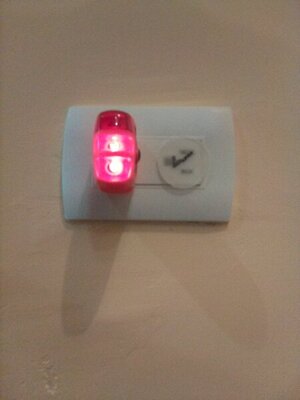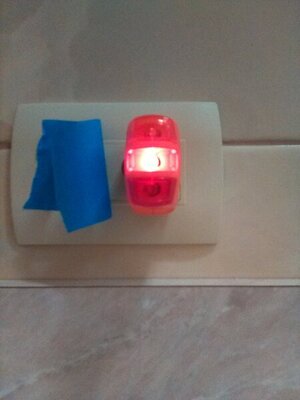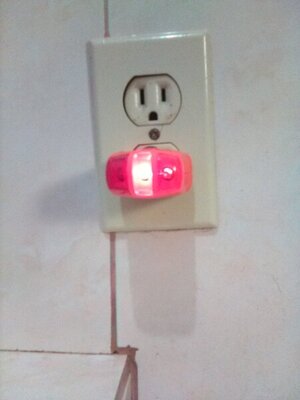Dibbons
Well-Known Member
- Local time
- 7:07 PM
- Joined
- Nov 29, 2014
- Messages
- 4,753
- Reaction score
- 5,467
- Location
- La Paz, B.C.S., Mexico
I am trying to diagnose some electrical outlet wiring discrepancies that I found after having purchased a little three prong outlet tester. The Mexican "electricians" around this new construction have come and gone so it's up to me to figure all of this out.
Basically, the tester has one red indicator light and two amber indicator lights. When the test is inserted into a three prong outlet, it can diagnose incorrect or incomplete circuits by assessing which of the three lamps are on or off.
Two amber lights indicate circuit wired correctly, easy enough (see photo one).
One amber light (the center one) indicates an open ground and I assume that would be pointing to the third/round terminal (see photo two).
Not noted in the instructions, is what I am finding in about half of the installed outlets, which is the center amber light on, and the other amber light on, but very dim (see photo three). It is this finding that I came here to the forum to inquire about. Is anyone here qualified to tell me what the problem is when the center amber light is strong/bright and the other amber light is weak/faint? In the photo, the weak amber looks super faint, but in person it actually is phasing weaker, then a little brighter, then weaker again. Or let's just say it is kinda blinking.
For your information, the red light is not on in any of the three photos. Thank you.
Thank you.



Basically, the tester has one red indicator light and two amber indicator lights. When the test is inserted into a three prong outlet, it can diagnose incorrect or incomplete circuits by assessing which of the three lamps are on or off.
Two amber lights indicate circuit wired correctly, easy enough (see photo one).
One amber light (the center one) indicates an open ground and I assume that would be pointing to the third/round terminal (see photo two).
Not noted in the instructions, is what I am finding in about half of the installed outlets, which is the center amber light on, and the other amber light on, but very dim (see photo three). It is this finding that I came here to the forum to inquire about. Is anyone here qualified to tell me what the problem is when the center amber light is strong/bright and the other amber light is weak/faint? In the photo, the weak amber looks super faint, but in person it actually is phasing weaker, then a little brighter, then weaker again. Or let's just say it is kinda blinking.
For your information, the red light is not on in any of the three photos. Thank you.
Thank you.



Last edited:




















